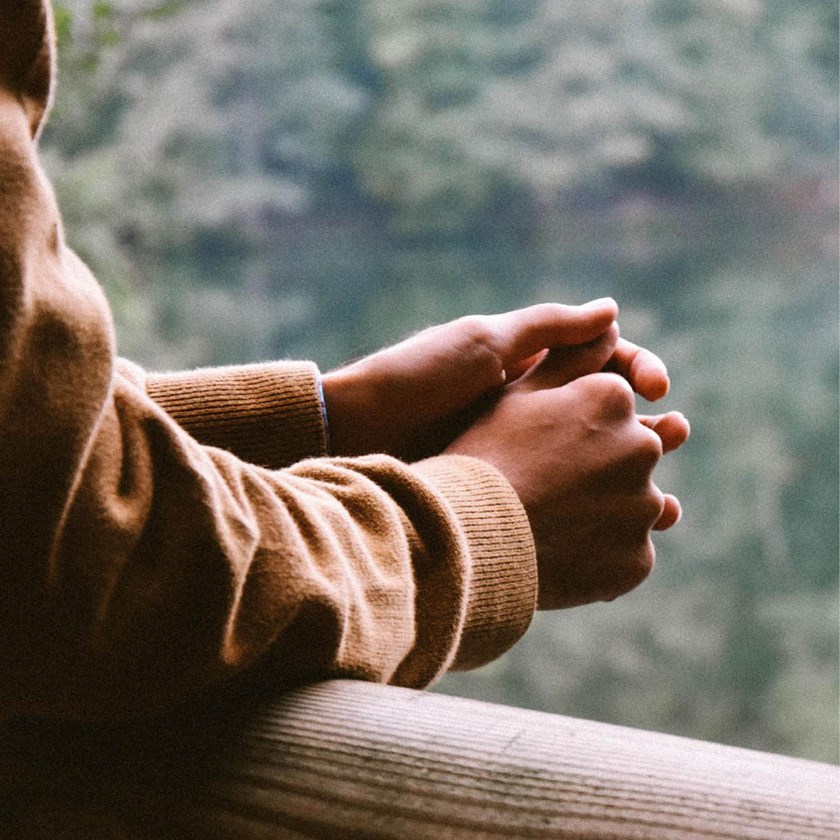Everyone’s Invited: let’s talk
Insight

The fallout from the website Everyone’s Invited has been evident all over the media in recent days and is of course being lived through by many of our clients. We felt it important to start a conversation which goes beyond the realms of most media coverage. So, let’s start talking…
About the website
Some may question the wisdom of a website encouraging anonymous testimonies from children and young people recounting personal experiences of sexual violence and harassment. Does the opening of such an anonymous channel merely divert disclosures of harmful sexual behaviours in school to an anonymous forum? Does anonymity hinder the ability of schools and other agencies to act, in contrast to named disclosures either in school or to the Police? Has naming the school as distinct from the individuals fuelled speculation or vigilantism without enabling concrete law enforcement action to be taken? Should crimes not be reported to and investigated by the Police, not on social media? Could harm result to children and young people who are identifiable from or emotionally unprepared for the impact of their own testimonies?
Whilst a number of these issues do concern me, my own view is that Everyone’s Invited is fulfilling a positive and important public purpose. The fact is that in the vast majority of cases disclosures of harmful sexual behaviour were not being made in school – for a variety of reasons but uppermost in children’s minds because they did not want them referred to their parents, children’s services, or the Police. So, I do not believe Everyone’s Invited has diverted disclosures from legitimate channels. Instead it has unlocked a vast amount of pent up and hitherto unrevealed disclosures ranging from the low level to the most serious. It has revealed, what we as lawyers had been detecting (albeit in much smaller numbers) over the last 10 to 15 years, a very significant rise in rape and sexual assault cases between teenagers (and younger children). It has called out cultures of every day sexual harassment and has sought to explain that “banter” is not harmless – it is the foundation of a culture in which children get hurt and are at risk of harm. It has explained the components of what it means by the expression “rape culture” and it has signposted responsible and legitimate sources of help for children and young people visiting the site. And perhaps, most of all it has, what any good movement should do, raised in the public eye an incredibly important issue and spurred us to act.
About the children and young people
Many children and young people will be feeling empowered by the ability to share their testimonies and by the impact which their collective action has had. Some may be struggling with the personal impact which it has had on them and may desperately need help. Term has ended for Easter and families will need to be vigilant for signs of anxiety and ready to receive disclosures. I refer at the end of this article to the Harmful Sexual Behaviour toolkit produced by the Lucy Faithfull Foundation which includes a range of helpful resources for children, families and schools.
About the schools
The phenomenon revealed by Everyone’s Invited is not new. Surveys and research have been highlighting the problem since 2012. The 2017 Girlguiding survey of girls aged 13 – 21 found that 64 per cent had experienced sexual harassment at school. A 2017 report by the NEU in collaboration with UK Feminista found that over a quarter of girls at mixed schools had experienced unwanted touching of a sexual nature at school. In a June 2020 report from the University of Bedfordshire entitled Beyond Referrals, their research found that 73 per cent of students surveyed indicated that sexual/sexist name calling occurred in school; 55 per cent that rumours circulated about student sexual activity; 36 per cent that sexual harassment took place; 30 per cent that sexual images of students were shared without consent; and 22 per cent that unwanted sexual touching occurred. This problem is widespread and has existed for some time.
It is therefore deeply unfortunate that the issues highlighted by the testimonies on Everyone’s Invited are being portrayed in parts of the media as an independent school problem. Whilst certainly the initial contributors to the testimonies predominantly came from independent schools, it is clearly the case that the phenomenon is sector wide. In that respect, it was heartening to hear Soma Sara, the founder of Everyone’s Invited, expressing disappointment at the way in which public debate was focusing on a small number of private schools. To suggest, as some journalists and politicians have done, that sexual violence and harassment between pupils is an independent school issue is to do an enormous disservice to the seriousness of the issue and to the true scale of children who have been and are being affected.
About parents
Those of us who are parents cannot wash our hands of responsibility and point to our children’s schools for blame. We have a significant role in educating our children about life, about respect for others, about relationships, about values – and yes – even about sex. We cannot simply contract our responsibility out to schools in its entirety. The majority of testimonies on Everyone’s Invited relate to events which have happened outside school time and premises. Yes, of course schools still bear a responsibility if an unacceptable school culture spills outside their gates. But parents do have a responsibility for guiding their children’s behaviour online, at parties, on holidays and even in school. In my experience, it is often in the more lax environment outside of school that incidents of sexual violence take place.
About alcohol and drugs
Many professionals have identified a worrying increased alcohol and drug misuse problem among children in recent years. The overlap between substance abuse and sexual violence is a well-known fact in adults, and many of the cases of rape or sexual assault which we deal with amongst school pupils have involved either alcohol or drugs or both. This is an issue which society needs to address. That includes but is certainly not limited to schools. Parents, as above, have critical roles to play.
About sex
With the omnipresence of pornography online, the popularity among teenagers (and adults) of Love Island style television, the growth of “swipe right” apps such as Tinder and Grindr, and even prime time game shows involving contestants rating naked strangers’ body parts – is it really a surprise that this generation of children are confused? Everyone’s Invited highlights what it means by a “rape culture” in schools and uses examples of slut shaming, victim blaming, objectification of women, jokes trivialising sexual violence and other outward presentations of a lad culture. But an equally legitimate question is to what extent that culture prevails in wider society such that our children are merely mimicking it, in and out of school.
About underreporting
Underreporting of sexual offences is a longstanding societal problem about which much has been written and efforts made to address. What Everyone’s Invited has highlighted is large scale underreporting of sexual offences by children. Whilst some of the reasons for that underreporting will be different, others will be the same. This wider context is important when looking at why children are often not reporting offences and concerns.
About the media
In my experience some elements of the national press will, without any shame or irony, happily back both sides of any argument provided it sells newspapers or generates online clicks. This area is but one example. Whilst on the one hand some journalistic outrage is directed at “leading schools” which have permitted the “rape culture” to exist; on the other they leap to criticise the same schools for being so “woke” as to bring in well-respected and external bodies to teach children about sex, relationships and equality. Some might describe this as no more than a demonstration of the era of culture wars we are living through. Personally, it strikes me as cynical and irresponsible, and a conscious attempt not to address the serious underlying issues.
About the future
If the mission of Everyone’s Invited is successful it will cease to exist because there would no longer be a need for such an outlet.
In my view, two things need to happen to fulfil the movement’s goal. First of all, schools need to create a safe space where pupils can come forward in a timely fashion and share their experiences. The problem here is the word “safe”, because in the eyes of schools and statutory agencies, that means no promises of confidentiality and the duty to make onward referral to children’s social care and Police. However, “safe” in the eyes of the child often means precisely the reverse. On top of that all teenagers are worried about the friendship consequences of speaking out. So serious work is needed here locally, and nationally, with Police and children’s services, to bridge this divide. There is no point in developing a “safe” system which children will not use.
Secondly, schools need to tackle the cultural issues which these testimonies have highlighted. This will be an incredibly difficult challenge riding into the wider societal headwinds described above. But there is no point giving up before starting. Securing the voice of the pupils, girls and boys, will be key. Forming an alliance with parents will be equally important. Rules and regulations are unlikely on their own to solve the problem; on their own they could merely drive culture underground. In my view there are three key elements to any solution. First, to build children’s sense of conscience around their own individual and collective behaviour. Secondly, to embed within schools a code of pupil conduct (which the pupils help devise) and provide the means by which it is implemented and enforced. Finally, to build the resilience of children to identify, resist and disclose conduct that breaches the code. But the onus of change should not fall on schools alone. This is a wider issue which requires a much broader response.
And finally
Schools’ key reference document for handling these cases must be the DfE guidance Sexual violence and sexual harassment between children in schools and colleges May 2018. That guidance is currently in the process of revision, but the existing guidance remains helpful and authoritative. For additional detail and information schools should refer to the Farrer & Co Peer on Peer Abuse Toolkit, also currently in the process of revision alongside the DfE guidance, but still eminently usable. Both F&Co’s Safeguarding Unit and the DfE have provided input into each other’s guidance – and indeed our toolkit is included as a link in the DfE guidance. I would also recommend schools refer to the Harmful Sexual Behaviour Toolkit developed by the Lucy Faithfull Foundation in 2020 with funding from the Home Office. It is an excellent publication from an excellent charity, and I commend it to all schools.
If you require further information about anything covered in this briefing, please contact David Smellie, or your usual contact at the firm on +44 (0)20 3375 7000.
This publication is a general summary of the law. It should not replace legal advice tailored to your specific circumstances.
© Farrer & Co LLP, April 2021






